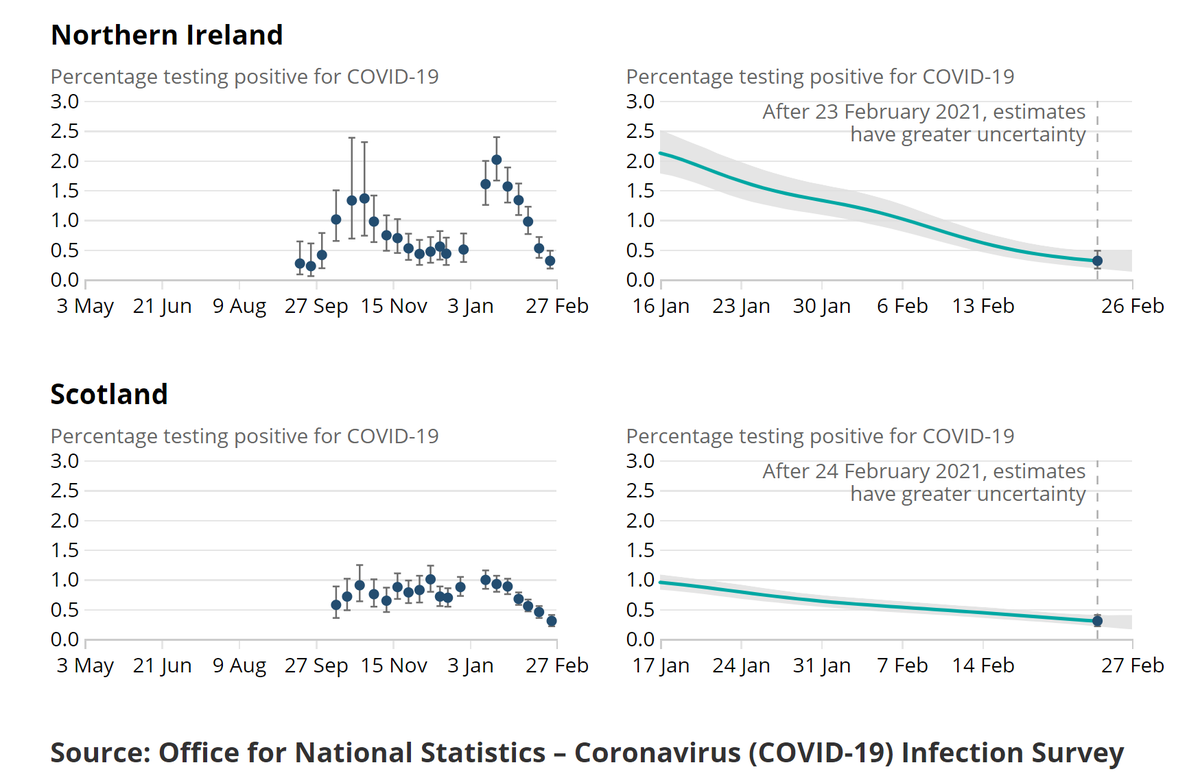
The latest SPI-M modelling by Imperial and Warwick has been published. Both suggest that the current roadmap would result in a third wave of some degree over the summer. The Warwick central scenario is more pessimistic with around 250 deaths pd in Aug.
assets.publishing.service.gov.uk/government/upl…
1/4
assets.publishing.service.gov.uk/government/upl…
1/4

One interesting chart by Warwick models who might become ill by vaccine status and age. Of note, during the peak, a high proportion is for those who will have had both doses. The assumption of 90% efficacy against death after 2D drives this figure, but that feels low to me.
2/4
2/4

Note that vaccine roll-out in England is assumed at 2.7m pw until end of July and 2m thereafter, which suggests the 4m (UK) we saw in March is unlikely to be repeated. This is a substantial reduction from the previous assumption, suggesting a slower roll-out is now expected.
3/4
3/4

The paper notes the considerable uncertainty, (even in the short term following the 29th March changes, as shown here), and thus there are many sensitivities discussed in detail. So the central assumptions should not be regarded as predictions, tempting as that might be.
4/4
4/4

• • •
Missing some Tweet in this thread? You can try to
force a refresh


















